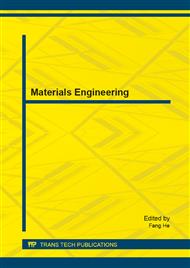p.75
p.81
p.87
p.97
p.103
p.111
p.121
p.127
p.133
The Influence of Cr Gradient of Transition Layer on Creep Rupture Properties of Dissimilar Joint
Abstract:
Abstract: In order to study the weak point and influence factor on creep rupture properties of dissimilar joint, a simulation joint which contains a transition layer has been built with the same welding parameters, the same base and weld materials as the real structure, providing theoretical principle for weld material selection and welding process optimization. In the creep rupture test of the simulation joint, most fractures are found at the fusion zone of transition layer. The existence of a softened layer at fusion zone of transition layer has been proved with metallographic observation, micro hardness test, chemical composition analysis and scanning electron microscope (SEM). The softened layer causes strain concentration and makes it much easier to fracture. A great Cr gradient between transition layers is considered as the reason of soften layer formation, since it leads carbon distribution and decreases the hardness where lack C element. In addition, some features of crystallization direction of fusion zone in transition layer have been found, which could be harmful on creep rupture properties too.
Info:
Periodical:
Pages:
103-110
Citation:
Online since:
June 2014
Authors:
Keywords:
Price:
Сopyright:
© 2014 Trans Tech Publications Ltd. All Rights Reserved
Share:
Citation:


